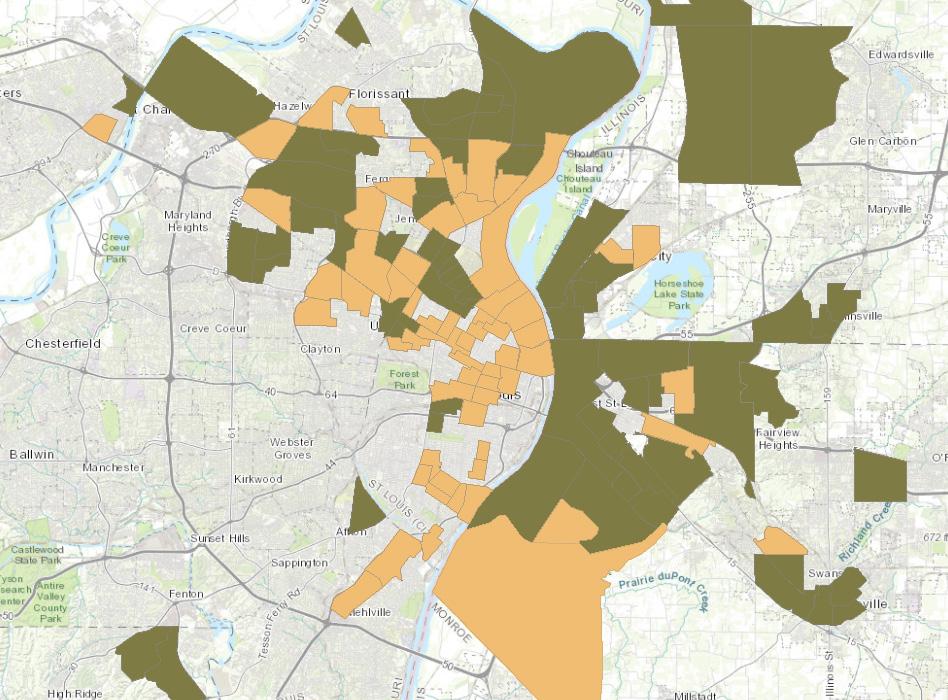
2 minute read
Foodways to the Forefront
Each year, the Kathryn M. Buder Center for American Indian Studies at Washington University in St. Louis hosts an event called “Hunt. Fish. Gather.” The center invites an Indigenous chef to showcase Indigenous ingredients and speak about food justice. Eric Pinto, who is connected to the Mississippi Band of Choctaw Indians and the Zuni tribe, serves as the assistant director at the center and helps put on the annual event. “We focus on the foods that would have been hunted, fished and gathered in this region right here,” Pinto says. Past years’ dishes have included roasted quail with pumpkin seeds and amaranth, as well as fish stew with catfish, mussels, crayfish and wilted chard.





The culinary team also focuses on highlighting traditional Indigenous ingredients that o en get overlooked, including spicebush, sumac and sassafras. At the 2022 event, Pinto put together a tea station that offered teas brewed from these plants. “They’re not just to drink; [we can use] a lot of our teas as medicine for ourselves and for healing purposes,” he says.
The idea of food as medicine is deeply rooted in Osage communities today. In a video series on cooking from the Osage Nation, members express how they approach cooking. “For us, food was medicine, and when we cook, we’re pu ing prayers into that food – and that makes that food extremely powerful,” member Paula Stabler says. “It’s a spiritual act to cook food for people.” Dishes common among the Osage Nation today include chicken dumplings, candied squash, grape dumplings and pork steam-fry.
Learn
by
by
“Decolonizing Diet Project Cookbook”

by
Reclamation After Removal
In the 1830s, the U.S. government forcibly relocated the Osage, Illini and other peoples to Kansas and later Oklahoma. Forced removal not only made traditional ingredients inaccessible to Indigenous groups, but also placed them on agriculturally less productive land, creating impacts that are still felt today. The reservation system reduced their access to land and water, and they often had to turn to premade ration foods provided by the government. “The government was giving commodity-type foods … basically, think of those as survival foods; they’re generally very high in refined carbohydrates and high sugars,” Pinto says. “They keep us alive, but we know long term-wise, it’s not good for our health.”
The legacy of that policy is evident in the current health issues Native American communities are facing. According to the Department of Health and Human Services, 48.1 percent of Indigenous people are obese; with an adult diabetes rate of 23.5 percent, Indigenous adults are almost three times more likely than the non-Hispanic white population to be diagnosed with diabetes. “On top of it, in these rural areas, you don’t have access to stores – the nice grocery stores we have in St. Louis,” Pinto adds.
Many Indigenous communities and activists have developed food sovereignty projects to address these long-running problems. The National Congress of American Indians defines food sovereignty as “the right to … cultivate, access and secure nutritious, culturally essential food produced through ecologically sound and sustainable methods.” These projects often happen on the local level.


For example, take the Osage Nations’ Harvest Land: a plot of land used to grow fruits and vegetables for tribal members. The project supplies an elementary school and an Elder Nutrition Program with fresh produce. “A lot of tribes are starting to now dive into food sovereignty; it’s just really bringing back a lot of those practices and the foods that were kind of lost,” Pinto says.
Events like “Hunt. Fish. Gather.” help raise awareness about Indigenous food justice in the wider community. Pinto is hopeful that people will continue to learn more about these systemic issues. “There’s just a lack of awareness and education about native peoples or cultures in St. Louis,” he says. “Our people have been here for thousands of years. We know how to live with the environment.”

Kathryn M. Buder Center for American Indian Studies, sites.wustl.edu/budercenter Osage Nation, osageculture.com





















